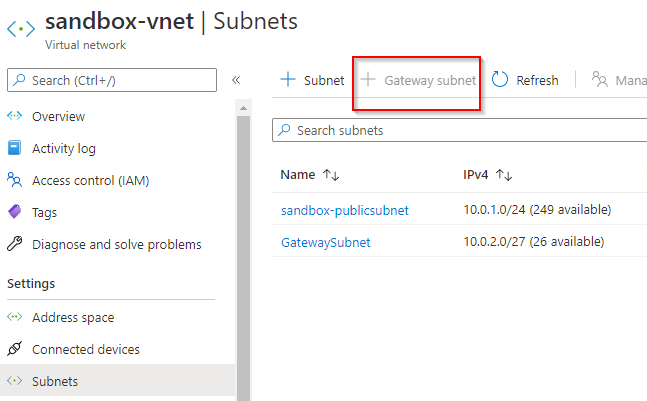Container Internals – Deep Dive
-
 Nived Velayudhan
Nived Velayudhan
- Infrastructre & hardware, Buildah, Containers
- July 21, 2021

Linux technologies make up the foundations of building/running a container process in your system. Technologies like:
- Namespaces
- Control groups ( Cgroups )
- Seccomp
- SELinux
Namespaces:
Namespaces provide a layer of isolation for the containers by giving the container a view of what appears to be its own Linux filesystem. This would limit as to what a process can see and therefore restrict the amount of resources available to this process.
There are several namespaces in the Linux kernel that are used by docker while creating a container:
[nivedv@homelab ~]$ docker container run alpine ping 8.8.8.8
[nivedv@homelab ~]$ sudo lsns -p 29413
NS TYPE NPROCS PID USER COMMAND
4026531835 cgroup 299 1 root /usr/lib/systemd/systemd --switched...
4026531837 user 278 1 root /usr/lib/systemd/systemd --switched...
4026533105 mnt 1 29413 root ping 8.8.8.8
4026533106 uts 1 29413 root ping 8.8.8.8
4026533107 ipc 1 29413 root ping 8.8.8.8
4026533108 pid 1 29413 root ping 8.8.8.8
4026533110 net 1 29413 root ping 8.8.8.8
- USER: This is used to isolate users and groups within a container. This is done by allowing containers to have a different view of UID and GID ranges as compared to the host system. This allows the software to run inside the container as the root user, but if a hacker is able to attack the container and then escape to the host machine, it will only have a non-root identity.
- MNT: This namespace allows the containers to have their own view of its file system hierarchy on the system. You can find the mount points for each container process in the
/proc/<PID>/mountslocation in your Linux system. - UTS: This namespace allows containers to have their own unique hostname and domain name. UTS stands for Unix Timesharing System. When you run a container, a random ID is used as the hostname even when you use the “ — name” tag. You can use the unshare command to get an idea of how this works.
[nivedv@homelab ~]$ docker container run -it --name nived alpine sh
/ # hostname
9c9a5edabdd6
/ #
[nivedv@homelab ~]$ sudo unshare -u sh
sh-5.0# hostname isolated.hostname
sh-5.0# hostname
isolated.hostname
sh-5.0#
sh-5.0# exit
exit
[nivedv@homelab ~]$ hostname
homelab.redhat.com
- IPC: Inter-Process Communication namespace makes it possible for different container processes to communicate with each other by giving them access to a shared range of memory or by using a shared message queue.
[root@demo /]# ipcmk -M 10M
Shared memory id: 0
[root@demo /]# ipcmk -M 20M
Shared memory id: 1
[root@demo /]#
[root@demo /]# ipcs
------ Message Queues --------
key msqid owner perms used-bytes messages
------ Shared Memory Segments --------
key shmid owner perms bytes nattch status
0xd1df416a 0 root 644 10485760 0
0xbd487a9d 1 root 644 20971520 0
------ Semaphore Arrays --------
key semid owner perms nsems
- PID: The process ID namespace is responsible for ensuring the processes running inside a container are isolated from the external world. When you run a ps command inside a container, you only see the processes running inside the container and not on the host machine because of this namespace.
- NET: The network namespace allows the container to have its own view of network interface, IP addresses, routing tables, port numbers, etc. How does a container able to communicate to the external world? All containers you create get attached to the master — docker0 interface.
[nivedv@homelab ~]$ docker container run --rm -it alpine sh
/ # ping 8.8.8.8
PING 8.8.8.8 (8.8.8.8): 56 data bytes
64 bytes from 8.8.8.8: seq=0 ttl=119 time=21.643 ms
64 bytes from 8.8.8.8: seq=1 ttl=119 time=20.940 ms
^C
[root@homelab ~]# ip link show veth84ea6fc
veth84ea6fc@if22: <BROADCAST,MULTICAST,UP,LOWER_UP> mtu 1500 qdisc noqueue
master docker0 state UP mode DEFAULT group default
Control groups ( cgroups ):
Cgroups are fundamental blocks of making a container. It is responsible to allocate and limit the resources, such as CPU, memory, Network I/O, that are used by containers. The Container Engine automatically creates cgroup filesystem of each type.
[root@homelab ~]# lscgroup | grep docker
cpuset:/docker
net_cls,net_prio:/docker
cpu,cpuacct:/docker
hugetlb:/docker
devices:/docker
freezer:/docker
memory:/docker
perf_event:/docker
blkio:/docker
pids:/docker
The Container Runtime sets up the cgroups values for each container when the container is run and all information is stored in /sys/fs/cgroup/*/docker . The following command will ensure that the container can use 50,000 microseconds of CPU time, and set up the soft and hard limits of memory to 500M and 1G respectively.
[root@homelab ~]# docker container run -d --name test-cgroups --cpus 0.5 --memory 1G --memory-reservation 500M httpd
[root@homelab ~]# lscgroup cpu,cpuacct:/docker memory:/docker
cpu,cpuacct:/docker/
cpu,cpuacct:/docker/c3503ac704dafea3522d3bb82c77faff840018e857a2a7f669065f05c8b2cc84
memory:/docker/
memory:/docker/c3503ac704dafea3522d3bb82c77faff840018e857a2a7f669065f05c8b2cc84
[root@homelab c....c84]# cat cpu.cfs_period_us
100000
[root@homelab c....c84]# cat cpu.cfs_quota_us
50000
[root@homelab c....c84]# cat memory.soft_limit_in_bytes
524288000
[root@homelab c....c84]# cat memory.limit_in_bytes
1073741824
SECCOMP:
Seccomp basically stands for Secure computing. It is a Linux feature that is used to restrict the set of system calls that an application is allowed to make. The default seccomp profile of docker disables around 44 syscalls out of the 300+.
The idea here is to provide containers access to only those resources which the container might need. For example, if you don’t need the container to be changing the clock time on your host machine, then probably you have no use of the clock_adjtime & clock_settime syscalls and it makes sense to block them out. Similarly, you wouldn’t want the containers to make changes to the kernel modules so there is no need for them to call create_module, delete_module syscalls.
SELINUX:
SELinux stands for security-enhanced Linux. If you are running a Red Hat distribution on your hosts, then SELinux is enabled by default. SELinux lets you limit an application to have access only to its own files and prevent any other processes from being able to access them. So, if an application is compromised, it would limit the number of files that it can affect or control. It does this by setting up contexts for files and processes and by defining policies that would enforce what a process is able to see and make changes to.
SELinux policies for containers are defined by the container-selinux package. By default, containers are run with the container_t label and are allowed to read & execute under the /usr directory and read most content from /etc directory. The files under /var/lib/docker and /var/lib/containers have the label container_var_lib_t .
Originally posted @ Medium

Nived Velayudhan
I help businesses solve their IT challenges in Linux Infrastructure such as automation and containerization on hybrid cloud environments by using customized open source solutions.
Note
Disclaimer: The views expressed and the content shared in all published articles on this website are solely those of the respective authors, and they do not necessarily reflect the views of the author’s employer or the techbeatly platform. We strive to ensure the accuracy and validity of the content published on our website. However, we cannot guarantee the absolute correctness or completeness of the information provided. It is the responsibility of the readers and users of this website to verify the accuracy and appropriateness of any information or opinions expressed within the articles. If you come across any content that you believe to be incorrect or invalid, please contact us immediately so that we can address the issue promptly.


